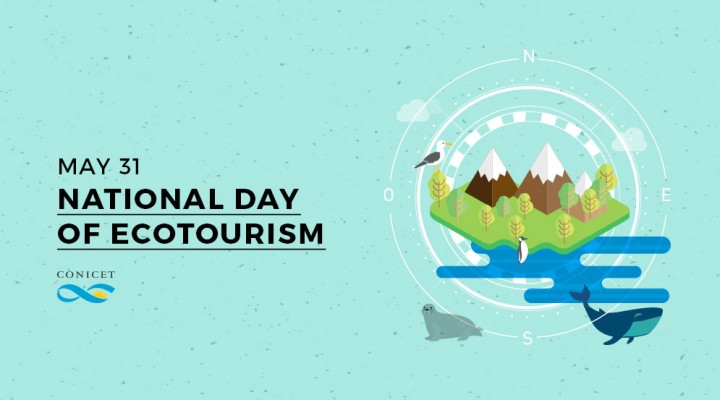NATIONAL DAY OF ECOTOURISM
For responsible tourism
How can science contribute to tourism to raise awareness in visitors, generate sustainability and preserve ecosystems?
Is it only for resting and breaking the routine that we go on holidays? Diego González Zevallos is a CONICET associate researcher who works at the “Patagonian Institute of Human and Social Sciences” (IPCSH, CONICET-CENPAT) [Instituto Patagónico de Ciencias Sociales y Humanas, in Spanish] and studies tourism and environmental education. The aim of his research is to promote people’s commitment to knowing the ecosystems, the societies and the surroundings through active participation.
“This type of specialized tourism offers a service oriented to enhance people’s knowledge on nature and humane societies. From a scientific point of view, this service is aimed at the development of tourist culture and environmental education to value the resources of our towns”, the researcher affirms.
At the National Patagonian Center (CENPAT-CONICET) in Puerto Madryn, Chubut, scientists develop concrete activities to improve and value tourism such as: training for guides, the design of management plans, specialized services, the organization of protected natural and urban areas, scientific and technical advice, support of local governments, and environmental impact assessment, among others.
According to the researcher, this type of initiatives has an immediate socio-productive impact in their local and regional environment especially in those communities where tourism is one of the main economic activities. Every year, the city of Puerto Madryn receives about 250,000 visitors attracted by its beaches in summer and whale watching from June onwards. The entrance of all these tourists leaves direct marks that could affect not only tourism but also the sustainability of some species that frequent those coastal environments.
Gregorio Bigatti, CONICET independent researcher at the “Institute for Biology and Marine Organisms” (IBIOMAR, CONICET-CENPAT) [Instituto de Biología de Organismos Marinos], and his team organize visits with tourists and school students to teach the biodiversity of marine invertebrates that live on the rocky shore of Puerto Madryn. “These species are at the base of the food chain and for this reason they are the food of other bigger animals”, the scientist states.
From January to April 2015, the research team tested the effect of the visitors’ recreational activities on these animals in some of the beaches of Puerto Madryn.
“Through different studies and anonymous interviews, we assessed the diversity, wealth, invertebrate coverage in the beach and algae in parcels affected by the passage of vehicles and in those places used by visitors to get in the water, bicycle traffic, ATVs and even automobiles. In all these areas, where human activities are intense, we could observe less invertebrate coverage”, Bigatti describes.
Apart from the ecotourism outings, the team organizes other activities aimed at reducing the negative impact of tourism. The researchers take different posters they design to schools and educational institutions so that students can observe and identify a great number of species that live along the coast. With the help of CONICET Documentary, the scientists make audiovisual material to spread knowledge on this subject in other parts of the country.
“Many people think that the sea and the coastline are an inexhaustible source of resources and beings. In order to help protect such a vast and important wildlife, it is vital to raise awareness about the biological aspects of these small animals, deal with it in due course so as to develop the policies aimed at conservation”, concludes the researcher.
By Alejandro Cannizzaro. CENPAT-CONICET.
